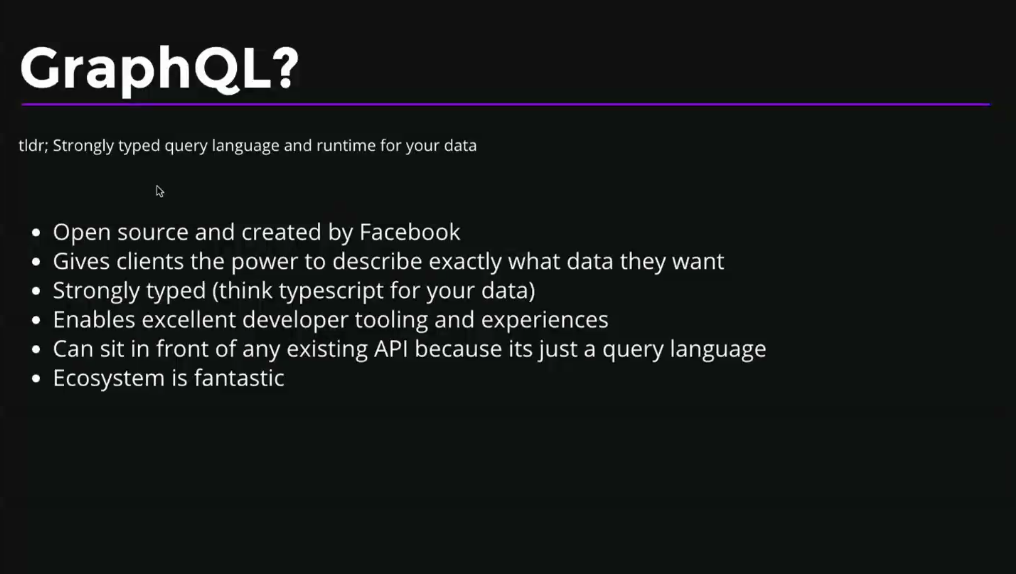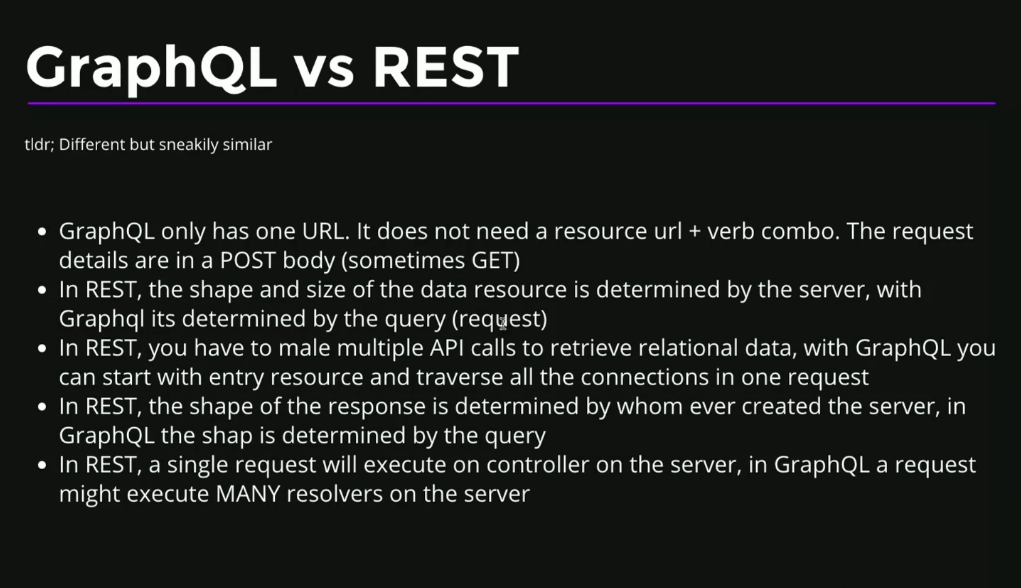The JavaScript reference implementation for GraphQL, a query language for APIs created by Facebook.
See more complete documentation at https://graphql.org/ and https://graphql.org/graphql-js/.
Looking for help? Find resources from the community.
An overview of GraphQL in general is available in the README for the Specification for GraphQL. That overview describes a simple set of GraphQL examples that exist as tests in this repository. A good way to get started with this repository is to walk through that README and the corresponding tests in parallel.
Install GraphQL.js from npm
With yarn:
yarn add graphqlor alternatively using npm:
npm install --save graphqlGraphQL.js provides two important capabilities: building a type schema, and serving queries against that type schema.
First, build a GraphQL type schema which maps to your code base.
import {
graphql,
GraphQLSchema,
GraphQLObjectType,
GraphQLString
} from 'graphql';
var schema = new GraphQLSchema({
query: new GraphQLObjectType({
name: 'RootQueryType',
fields: {
hello: {
type: GraphQLString,
resolve() {
return 'world';
}
}
}
})
});This defines a simple schema with one type and one field, that resolves
to a fixed value. The resolve function can return a value, a promise,
or an array of promises. A more complex example is included in the top
level tests directory.
Then, serve the result of a query against that type schema.
var query = '{ hello }';
graphql(schema, query).then(result => {
// Prints
// {
// data: { hello: "world" }
// }
console.log(result);
});This runs a query fetching the one field defined. The graphql function will
first ensure the query is syntactically and semantically valid before executing
it, reporting errors otherwise.
var query = '{ boyhowdy }';
graphql(schema, query).then(result => {
// Prints
// {
// errors: [
// { message: 'Cannot query field boyhowdy on RootQueryType',
// locations: [ { line: 1, column: 3 } ] }
// ]
// }
console.log(result);
});The npm branch in this repository is automatically maintained to be the last
commit to master to pass all tests, in the same form found on npm. It is
recommended to use builds deployed to npm for many reasons, but if you want to use
the latest not-yet-released version of graphql-js, you can do so by depending
directly on this branch:
npm install graphql@git://github.com/graphql/graphql-js.git#npm
GraphQL.js is a general purpose library and can be used both in a Node server and in the browser. As an example, the GraphiQL tool is built with GraphQL.js!
Building a project using GraphQL.js with webpack or
rollup should just work and only include
the portions of the library you use. This works because GraphQL.js is distributed
with both CommonJS (require()) and ESModule (import) files. Ensure that any
custom build configurations look for .mjs files!
####GraphQL is a syntax that describes how to ask for data, and is generally used to load data from a server to a client. GraphQL has three main characteristics:
It lets the client specify exactly what data it needs. It makes it easier to aggregate data from multiple sources. It uses a type system to describe data. With GraphQL, the user is able to make a single call to fetch the required information rather than to construct several REST requests to fetch the same.

